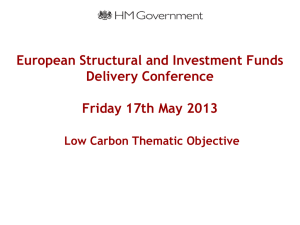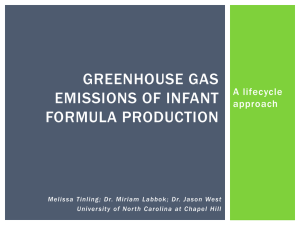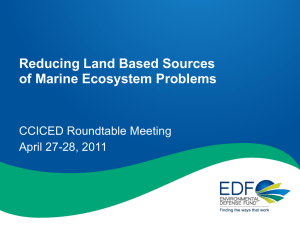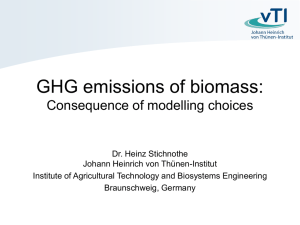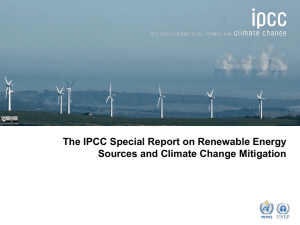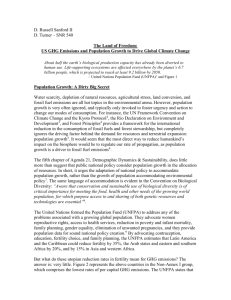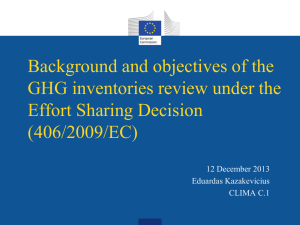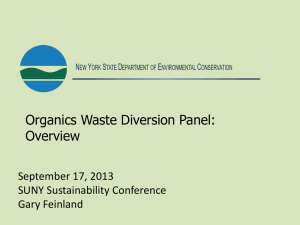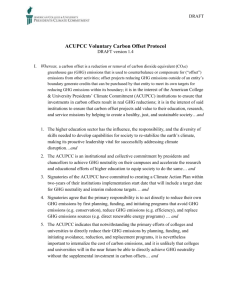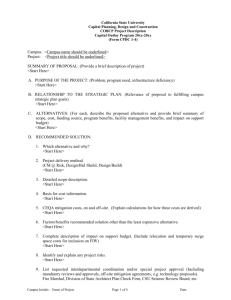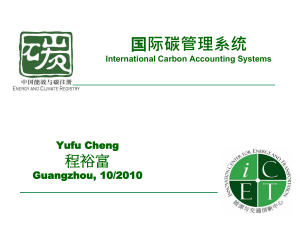Document
advertisement
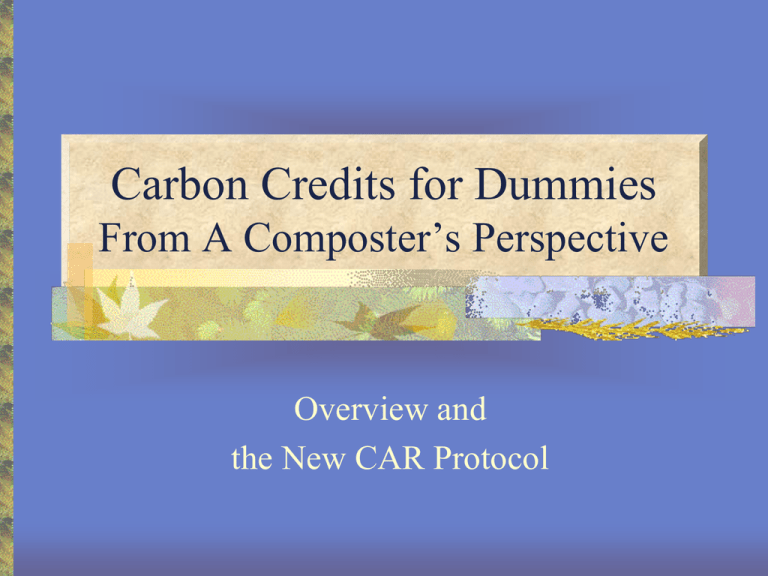
Carbon Credits for Dummies From A Composter’s Perspective Overview and the New CAR Protocol What is the deal with carbon credits, anyway? Source #1 Emits 10 Source #2 Emits 10 But the standard drops from 10 to 8! #1 spends $10 and drops emissions to 7. #2 spends $10 and can only get to 9!!! For #2 to get to 8 would cost $20. TOO EXPENSIVE! But #1 sells 1 to #2 for only $10. SUCH A DEAL! Everyone wins! • #1 is rewarded $10 for doing better than they had to. • #2 can afford to pay $10 more and keep operating. • The air benefits as if both met the standard. How does this get the air cleaner over time? • Standards will get lower. • Fewer credits will be available. • Credits will get more expensive. In the future, #1 and #2 will have to choose between: 1. Upgrade plant and operations to meet new standards. 2. Buy credits at the market price to meet the standard. 3. Close. What is the deal with composting and carbon credits? Landfills are Typically Anaerobic. Organics (Anaerobic) Methane (CH4) + A little Carbon Dioxide (CO2) + Nitrous Oxide (N2O) Well managed composting is Aerobic. Organics (Aerobic) Carbon Dioxide (CO2) + A little Methane (CH4) + Nitrous Oxide (N2O) Methane (CH4) … is a really, really bad Green House Gas (GHG). Carbon Dioxide (CO2) … is a less bad GHG. So if you divert organics from a landfill to composting, you reduce GHG emissions and ... you may be able to generate and sell Carbon Credits (tons of CO2e) economically. Several Registries and Protocols to Choose From others Some are flexible and project specific; others are not. All require this. Eligible projects must be: 1. 2. 3. 4. Voluntary Real Additional Verifiable CAR What composting is eligible? • Only food waste and food-soiled nonrecyclable paper • Only commercial and residential food waste • Non-industrial (no agricultural or food processing) CAR What composting is eligible? • Not other organics like green waste or biosolids diverted from landfills (like CCX) • Not financial additionality (like VCS) • Not project expansions (like VCS) CAR Eligibility • Start Date – Submit <6 months before start date • Location – U.S., territories & tribal areas • Performance Standard • Eligible feed stocks (MSW food waste, soiled paper, grocery store waste if diverted from LF or new) • BMP (time, temperature, turning) CAR Eligibility • Legal Requirement Test (Voluntary) • Regulatory Compliance Test Quantifying Emissions • “Baseline Emissions” = what would have been emitted if the organics were landfilled • Assumed to decrease over time as more of the landfill is covered and more CH4 is recovered Quantifying Emissions Baseline GHG Emissions - Composting GHG Emissions GHG Reduction* * In tons CO2 equivalents Calculation must consider all sources, sinks and reservoirs. • Source – releases GHG to atmosphere • Sink – removes GHG from atmosphere • Reservoir – stores or accumulates GHG Biogenic GHG does not count. Anthropogenic GHG does count. CAR uses standard, default calculations for: • Landfill GHG generation and emissions, & • Compost GHG generation and emissions. • And, CAR requires that the eligible (food waste) portion of the feedstock be measured. Conclusions 1. Composting food waste and other organics could be a source of C-Credits. 2. C-Credits could be of significant value and improve economic viability. 3. There are several registries and protocols to consider. 4. Each project should consider the benefits and costs of each before proceeding. Risa Weinberger & Associates, Inc. Risa Weinberger, P.E. risa@risawassoc.com 214-340-8478

